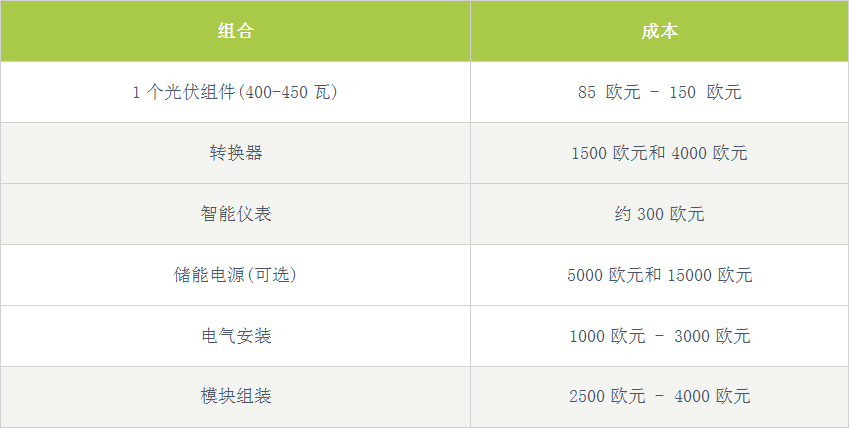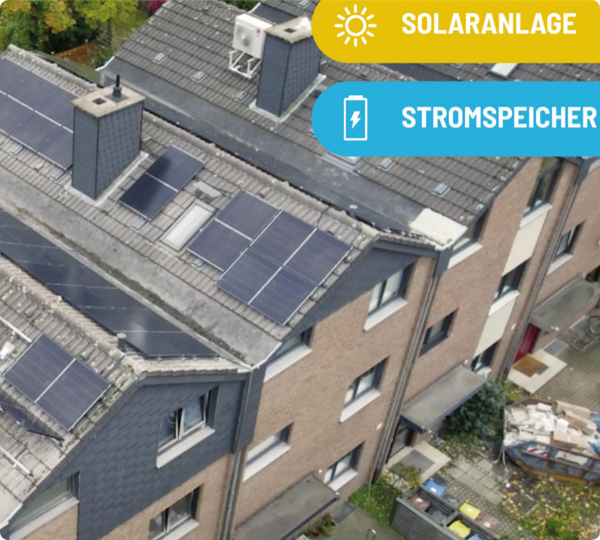A typical photovoltaic system in a single-family home is a 10kWp photovoltaic system. In addition to components, costs include planning and assembly.
Below, we’ve summarized for you the prices for the main cost items you’ll receive when purchasing a photovoltaic system.

Photovoltaic module
Currently, module prices range from €0.20 to €0.40 per watt. Therefore, a typical monocrystalline photovoltaic module with a power of 400-450 watts currently costs 85-150 euros. Therefore, for a 10 kW peak system, a pure module cost of around 3500 Euros would be incurred. Choose polycrystalline or thin film modules to reduce costs by 20% to 40%. However, these module types are also significantly less efficient and are less optically attractive than black monocrystalline modules.
converter
Inverter prices generally range from 1,500 yuan to 4,000 yuan. How much it actually costs depends largely on the features and manufacturer of the device.
power storage
Electricity storage prices for private residences will range from €6,000 to €15,000 in 2024. There can be significant price fluctuations based on manufacturer and storage size.
Smart Meter
A smart meter costs approximately €300 for a small PV system. Without smart meters, the photovoltaic system must be dynamically adjusted at 70% of rated power. The smart meter records your consumption in real time and can use up to 100% of the device's rated power (e.g., 30% consumption and 70% power). In a few years, smart meters will be a must-have for all homes.
energy storage converter
Most modern photovoltaic power plants have energy managers. It connects various components of the home energy system (for example: B. photovoltaic power generation, charging columns, heat pumps, storage), monitors their energy flow and performs intelligent control.
Electrical Installation & Module Installation
The cost of electrical installation and module installation depends greatly on site conditions and the size of the equipment. Roughly speaking, for a system of 8-12 kWp, the electrical installation costs €1,000 - €3,000 and the module installation costs €2,500 - €4,000.
repair
Maintenance of the photovoltaic system is not necessary as the system has no moving parts. Failures are rare and can usually be detected quickly through equipment monitoring. If you choose scheduled maintenance, you can choose between 1% and 1.5% of the asset cost. For equipment below 15 kWp, the annual cost is approximately €200 – 400. If you sign a fixed maintenance contract with remote device monitoring, it will cost you about 300 euros per year. At the same time, it is necessary to ensure that the factory runs smoothly.

